Top-down Integration Testing
- In top-down incremental integration testing, we will add the modules incrementally or one by one and test the data flow in similar order as we can see in the below diagram:
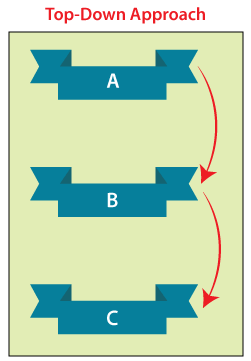
- This testing technique deals with how higher-level modules are tested with lower-level modules until all the modules have been tested successfully.
- In the top-down method, we will also make sure that the module we are adding is the child of the previous one, like Child C, is a child of Child B.
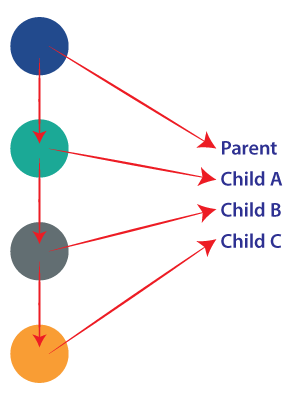
- The purpose of executing top-down integration testing is to detect the significant design flaws and fix them early because required modules are tested first.
Bottom Up Integration Testing
- This type of testing method deals with how lower-level modules are tested with higher-level modules until all the modules have been tested successfully.
- In bottom-up testing, the top-level critical modules are tested, at last. Hence it may cause a defect.
- In simple words, we can say that we will be adding the modules from the bottom to the top and test the data flow in similar order as we can see in the below image:
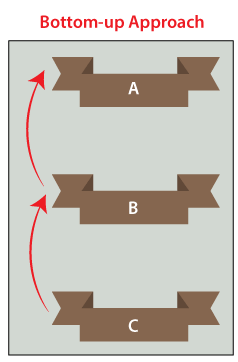
- In the bottom-up method, we will ensure that the modules we are adding are the parent of the previous one as we observe in the following image:
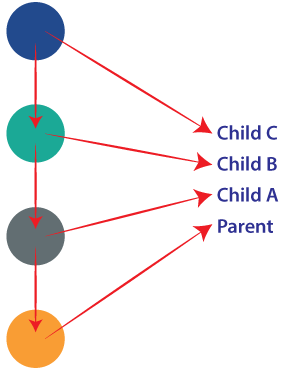
Difference between top-down and bottom-up incremental integration testing
The below facts explain the critical differences between top-down and bottom-up integration testing, which will allow test engineers to create an informed decision regarding which type of integration testing approach they want to select for the different testing processes.
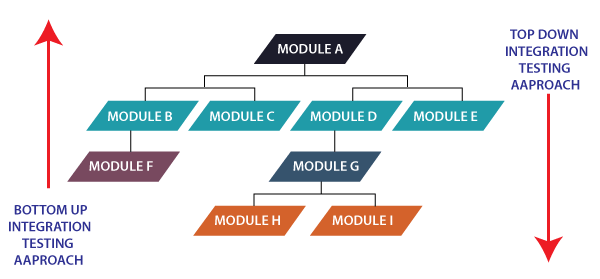
- The top-down integration testing approach is simple and not data-intensive; on the other hand, the bottom-up integration testing approach is complex and data-intensive.
- The process of top-down integration testing is much simpler as compared to bottom-up integration testing.
- Top-down approaches are backward-looking; on the other hand, the bottom-up approaches are forward-looking.
- The top-down integration testing works through significant to minor components, whereas the bottom-up approach works through small to essential components or modules.
- Top-down approach analyses the risk by collecting the impact of internal operational failures, whereas the bottom-up approach analyses the risks in individual processes with models’ help.
- In the top-down approach, the stubs are used to simulate the submodule, which implies that the Stub works as a momentary replacement. On the other hand, in the bottom-up testing approach, the drivers simulate the main module, which means that the Driver works as a momentary replacement.